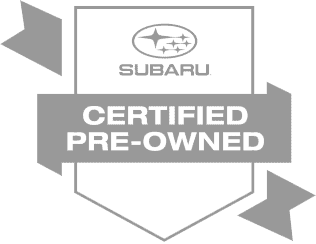Ascent vs Forester
 |  |
Executive Summary
Ascent has the longer wheelbase (the distance between the axles)--almost nine inches. Lengthening the distance between the axles provides an even smoother ride because the vehicle platform covers more square area and therefore bumps are less noticeable. Turbocharged engine makes the Ascent quicker, Ascent tips the scales with an extra half-ton of mass so Forester claims the agility title.
Both offer the all-weather prowess of a sport utility vehicle with the lower cost, higher fuel economy, better ride, and superior outward visibility of a car. (They are both built on car platforms instead of truck frames).
They boast many safety features, including full-time symmetrical all wheel drive (with no buttons to push). Subaru's suite of driver-assistance technologies, Eyesight, is standard on both.
Comparing the same trim levels, Ascent costs about $8,000 more. However, Ascent comes with standard or optional equipment not offered on Forester, such as a front view camera, third-row seating, turbocharged engine, and NINETEEN cupholders!
Comparing the same trim levels, Ascent costs about $8,000 more. However, Ascent comes with standard or optional equipment not offered on Forester, such as a front view camera, third-row seating, turbocharged engine, and NINETEEN cupholders!
Ascent | Forester | |
| Ground Clearance is the same, at 8.7 inches, so both elude obstacles that snag mortal vehicles. | 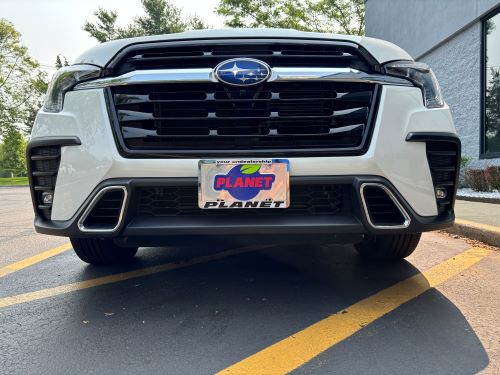 | 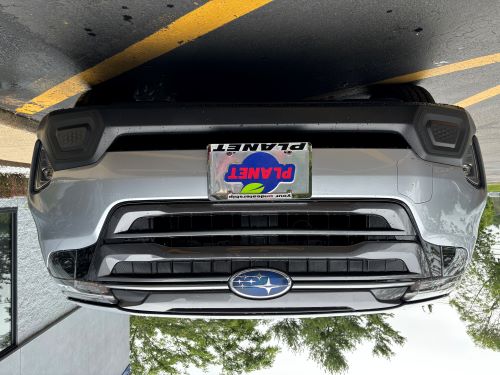 |
| Ascent is over four inches wider. |  | 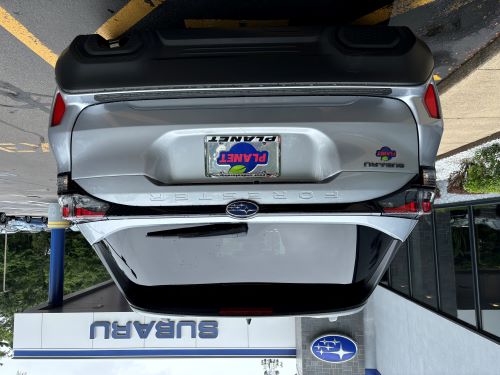 |
| Ascent is almost fifteen inches longer. | 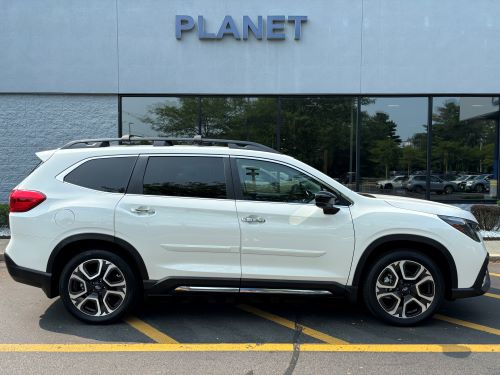 | 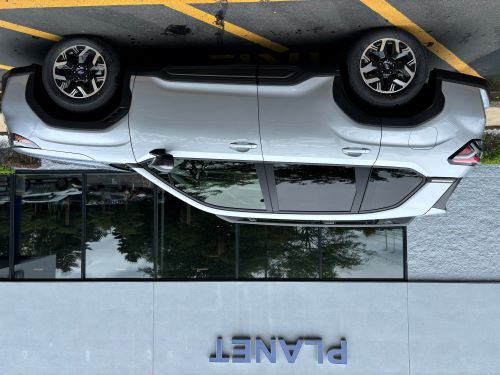 |
| Ascent is almost three inches taller. | 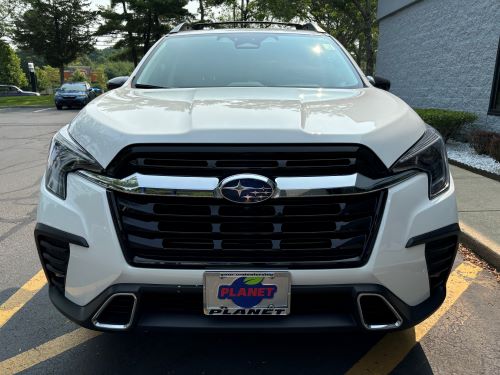 | 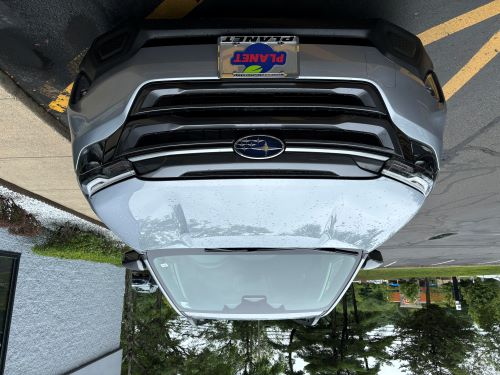 |
| Outward Visibility Both have a "command driving position" allowing you to see over traffic in front of you. Both have enviable outside visibility, but Forester ranked #1 among all vehicles! See the graphic. |  |  |
| Dawg (and cargo) Space Blue can stand up straight in both, but he could take more of his buddies in the Ascent. |  Max cargo (behind first row) 86 cubic ft |  Max cargo (behind first row) 76 cubic ft |
| Power Tailgate Option Optional on both Ascent and Forester. Watch our instructional video here. |  153 cubic feet 153 cubic feet |  108 cubic feet 108 cubic feet |
| Total People Space Given the Forester's shorter overall length, it's surprising to see so much legroom in the Forester. Both benefit from ingenious scooping of front seats so there's more room for knees. | 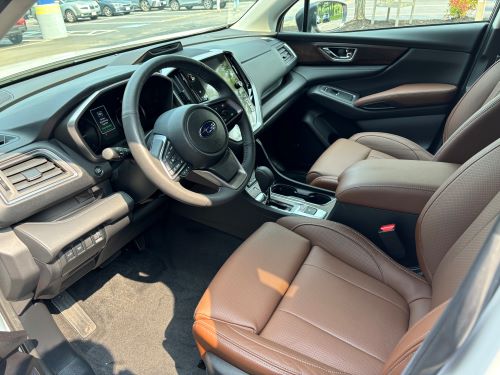 | 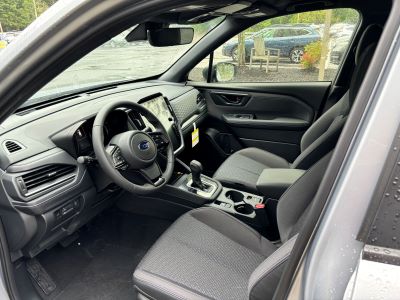 |
| Rear Legroom Given the Forester's shorter overall length, it's surprising to see so much legroom in the Forester. Both benefit from ingenious scooping of front seats so there's more room for knees. | 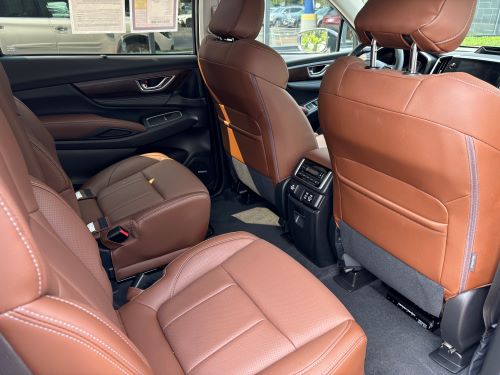 | 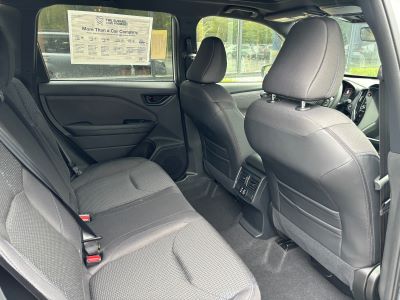 |
| Price Comparably equipped, Ascent is about $8,000 more, which buys you a bigger and better-equipped vehicle. | Ascent Models and Prices | Forester Models and Prices |
| Price Comparably equipped, Ascent is about $8,000 more, which buys you a bigger and better-equipped vehicle. | Ascent Models and Prices | Forester Models and Prices |
| Towing Capacity Forester can tow a small utility trailer but to relocate the tiny house you'll need the Ascent. | 5000 pounds (all models except base) | 1500 pounds |
| Crash Tests Both earn the Insurance Institute for Highway Safety's "Top Safety Pick" ratings. |  |  |
| Subaru Eyesight System Subaru Eyesight includes pre-collision braking, lane departure warning, adaptive cruise, and much more. Both have Subaru's latest system, which includes Rear Cross Traffic Alert, Blind Spot Detection, and steering responsive headlights. Only Forester offers DriverFocus. | 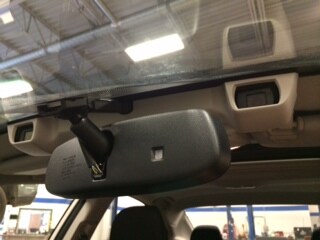 |  |
| Optional Moonroof Both offer huge panoramic moonroofs big enough to eject unwelcome passengers. Ascent glazing is larger, but only the first of its two panels slides and tilts. Forester unit is one piece. |    |    |
| Engines and Fuel Economy Both run regular unleaded. |  2.4 liter turbo four cylinder |  2.5 liter turbo four cylinder |
| Fuel Tank and Max Range Forester goes farther with a small tank because of its outstanding fuel economy. | 19.3 gallons, 501 miles | 15.9 gallons, 547 miles |
| Rooftop Cargo Solutions Both have standard roof rails (the bars that run front to back). Crossbars are optional. |  | 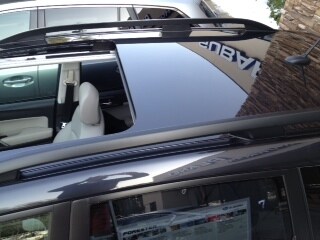 |
| Planet-exclusive high resolution photo galleries, videos, and much more... |
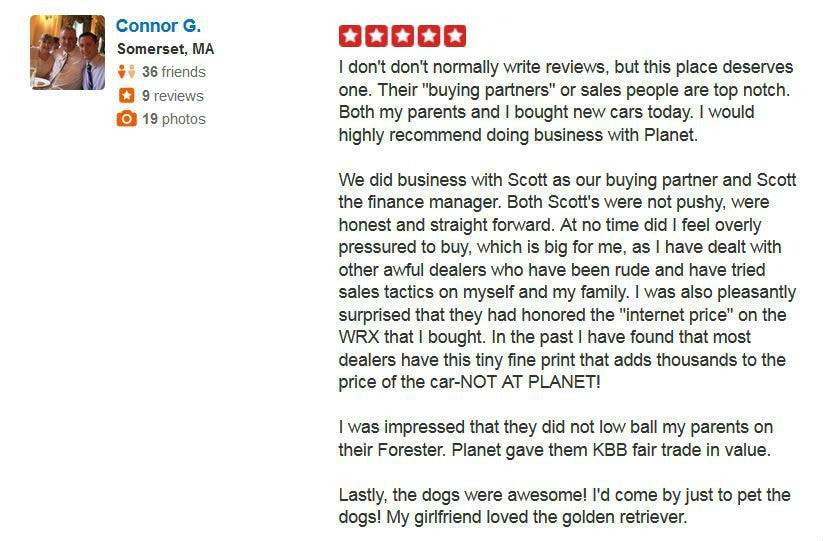
Search our inventory for your next vehicle!
Subaru shoppers looking to understand the differences between the Ascent and the Forester are in the right place, especially if you want to know which one is best for you in the Boston area.
* Although every reasonable effort has been made to ensure the accuracy of the information contained on this site, absolute accuracy cannot be guaranteed. This site, and all information and materials appearing on it, are presented to the user "as is" without warranty of any kind, either express or implied, including but not limited to the implied warranties of merchantability, fitness for a particular purpose, title or non-infringement. All vehicles are subject to prior sale. Price does not include applicable tax, title, and license. Not responsible for typographical errors.





